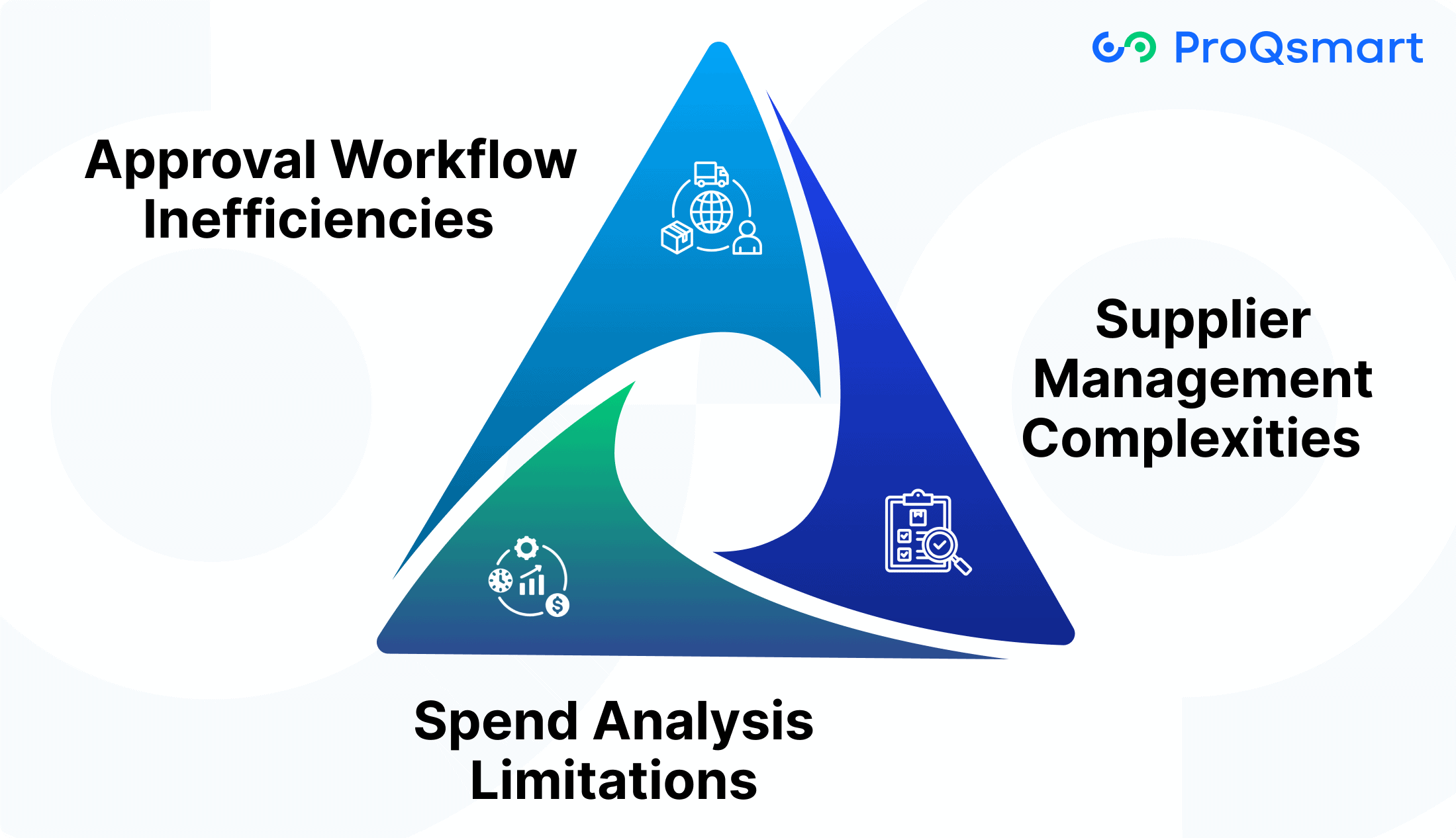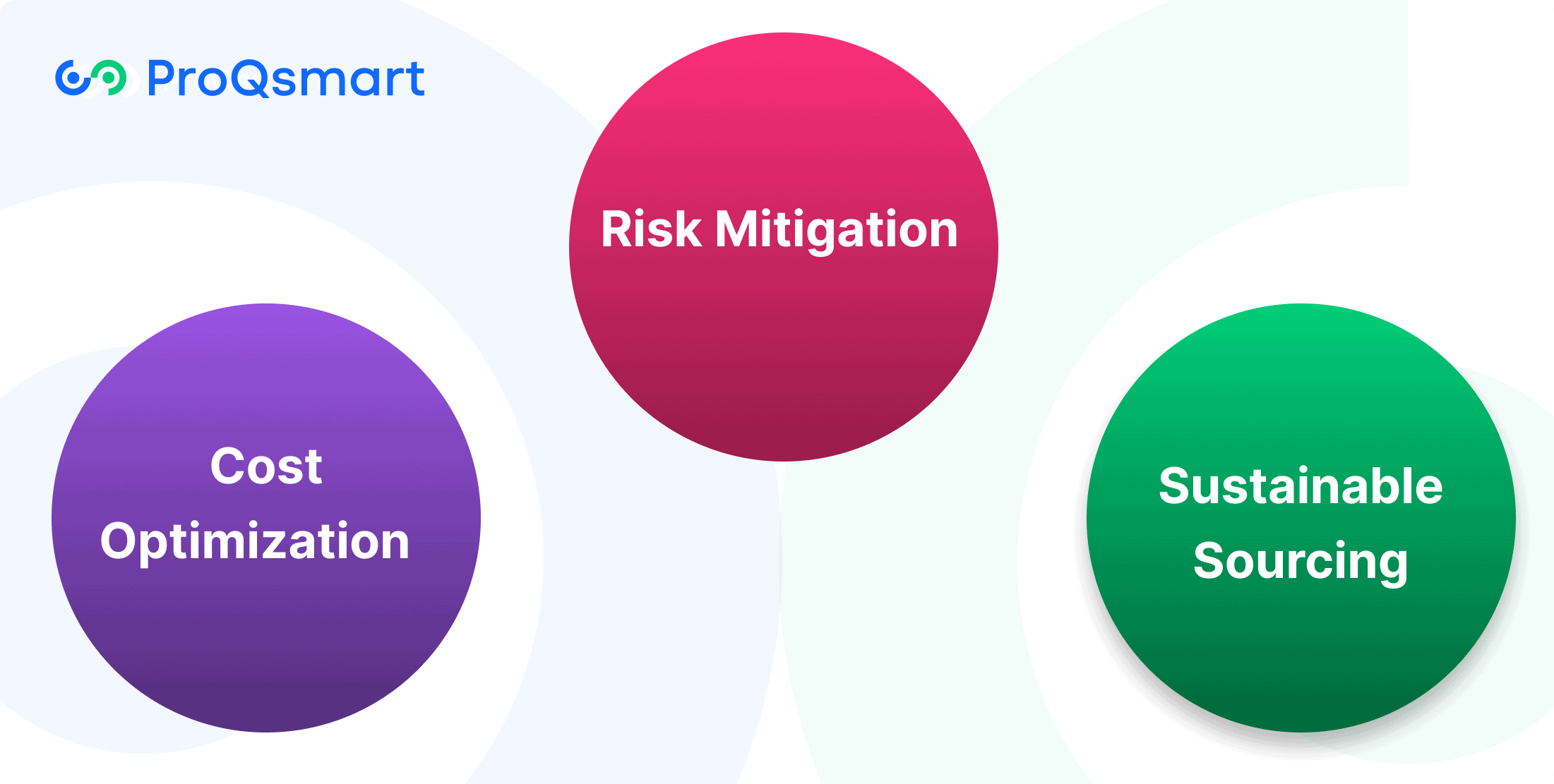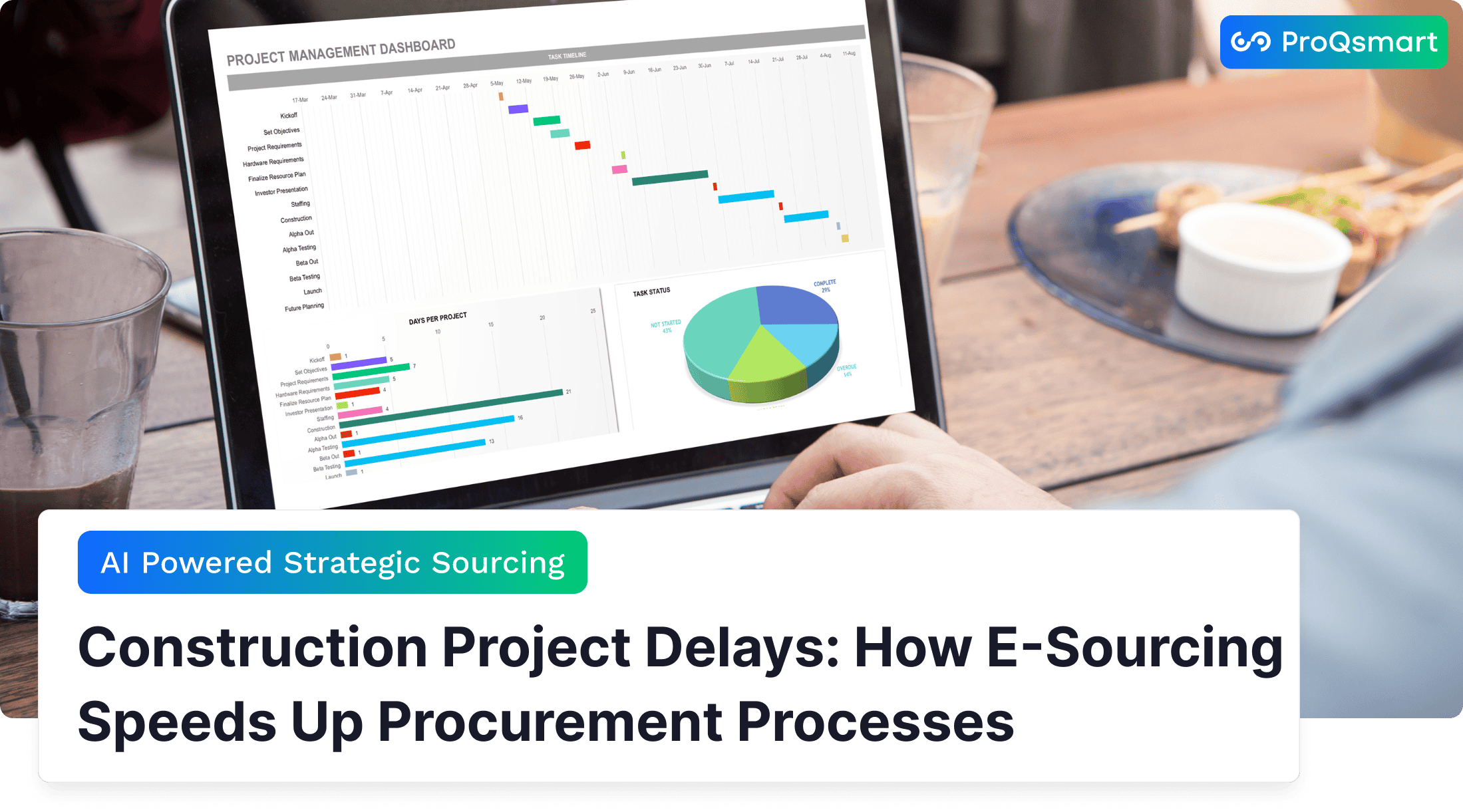Construction projects are frequently plagued by procurement delays, which can cascade into missed deadlines, inflated costs, and strained client relationships. These setbacks often stem from fragmented supplier communications, time-consuming manual bid processes, and the challenge of maintaining transparency across complex supply chains. As projects grow in scale and regulatory demands intensify, traditional procurement methods struggle to keep pace with the need for speed, compliance, and risk mitigation. Meanwhile, the following sections will explore the root causes of construction procurement delays, demonstrate how e-sourcing addresses these pain points, and outline best practices for maximizing its impact on project outcomes.
What Procurement Obstacles Are Holding Back Construction Projects?
Procurement in construction is fraught with bottlenecks that can stall projects, inflate costs, and expose organizations to heightened risk. These obstacles often originate from outdated processes and fragmented data, complicating the e sourcing process and dragging down the entire procurement lifecycle—from approvals to spend analysis and beyond.
Key Procurement Bottlenecks and Their Impacts

1. Approval Workflow Inefficiencies
Manual approval processes and unclear escalation paths create significant delays. Each additional approval layer increases the risk of bottlenecks, especially when documentation is missing or roles are ambiguous.
Common challenges include:
-
Waiting on signatures or clarifications from multiple stakeholders
-
Lack of automated reminders or notifications
-
Inconsistent approval criteria across projects
Best practices to overcome:
-
Implement automated approval workflows with clear routing and escalation
-
Standardize documentation and approval criteria
-
Use digital signatures and centralized platforms to speed up decision-making
2. Supplier Management Complexities
Unreliable or poorly managed suppliers can derail entire projects. Issues such as missed deadlines, inconsistent quality, and lack of accountability often require urgent substitutions, which further disrupt schedules and increase costs.
Risks associated with poor supplier management:
-
Project delays due to late or incomplete deliveries
-
Increased exposure to quality and compliance risks
-
Over-dependence on a single supplier, amplifying vulnerability
Mitigation strategies:
-
Conduct regular supplier performance reviews and audits
-
Qualify and onboard suppliers based on stringent criteria
-
Diversify the supplier base to reduce dependency and spread risk
3. Spend Analysis Limitations
Without robust spend analysis, procurement teams miss out on savings opportunities and struggle to negotiate favorable

How Does E-Sourcing Accelerate Procurement and Reduce Construction Delays?
Construction projects are highly sensitive to procurement speed and accuracy—delays in sourcing materials or services can cascade into costly project overruns. E-sourcing platforms address these challenges by digitizing and streamlining the entire procurement process, enabling construction teams to move faster, collaborate more effectively, and maintain compliance with industry standards.
Below, lets break down the key ways e-sourcing accelerates procurement and mitigates common construction delays:
1. Automated Bidding
Manual bidding processes are slow, error-prone, and resource-intensive. E-sourcing tools automate the creation, distribution, and management of bids, ensuring consistency and reducing administrative burden.
|
Manual Bidding |
E-Sourcing Automated Bidding |
|
Time-consuming |
Fast, streamlined |
|
Prone to errors |
Error reduction via automation |
|
Inconsistent templates |
Standardized, uniform communications |
|
Missed deadlines |
Automated reminders and tracking |
2. Centralized Data Management
Fragmented data and scattered documents lead to inefficiency and mistakes. E-sourcing platforms centralize all procurement information—contracts, compliance records, performance data—making it accessible and secure.
These advantages enable faster, more secure access to accurate procurement data, significantly speeding up sourcing cycles:
-
Cloud-based access enables teams to retrieve documents anywhere, anytime.
-
Robust data governance ensures accuracy and security.
-
Accelerated sourcing cycles—teams can launch new procurement rounds up to 80% faster using historical data and templates.
3. Performance Analytics
Data-driven insights are essential for identifying issues and improving supplier performance. E-sourcing platforms provide analytics dashboards that track key performance indicators (KPIs) such as quality, on-time delivery, and cost savings.
These are the key features of performance analytics:
-
Real-time performance tracking helps teams spot underperforming suppliers early.
-
Historical analytics inform smarter sourcing strategies for future projects.
-
Automated reporting highlights trends and potential risks, enabling proactive decision-making.
4. Real-Time Collaboration
Traditional procurement relies on slow, fragmented communication—often leading to misunderstandings and delays. E-sourcing platforms foster real-time collaboration between project teams and suppliers:
-
Shared digital workspaces for document exchange and updates.
-
Instant feedback loops allow suppliers to raise concerns or propose adjustments before issues escalate.
-
Virtual meetings and live updates keep all stakeholders aligned, regardless of location.
5. Enhanced Compliance
Regulatory compliance is critical in construction but can be cumbersome to manage manually. E-sourcing solutions embed compliance checks into procurement workflows, simplifying adherence to policies and reducing risk.
-
Automated compliance tracking and audit trails for every procurement step.
-
Regular training modules and standard audits built into the platform.
-
Early identification of compliance issues, reducing the risk of fines or project delays.
Strategies to Implement E-sourcing in Construction Procurement
Effective e-sourcing implementation in construction procurement requires a structured approach tailored to the industry’s complex, project-driven nature. By adopting digital tools strategically, procurement teams can enhance efficiency, transparency, and cost control while aligning with project timelines and organizational objectives. Below are key steps to ensure successful integration:
-
Assess Current Procurement Processes: Conduct a thorough audit of existing sourcing workflows to identify inefficiencies, such as manual RFx processes or fragmented supplier data. This baseline highlights areas where e-sourcing can deliver the most impact, such as reducing bid evaluation time.
-
Define Clear Objectives and Metrics: Establish specific goals, such as shortening sourcing cycles by 20% or improving supplier bid compliance. Align these with project-specific needs (e.g., cost savings on materials) and broader organizational priorities (e.g., sustainability compliance).
-
Select a Suitable E-Sourcing Platform: Choose a platform with features like RFx automation, real-time analytics, and supplier collaboration tools. Ensure it integrates with existing systems (e.g., ERP or project management software) to streamline data flow and support construction’s multi-stakeholder environment.
-
Engage Stakeholders Early: Involve procurement, project managers, finance, and suppliers in planning to align expectations and address concerns. Early buy-in ensures smoother adoption and fosters collaboration across teams managing construction projects.
-
Pilot and Scale Gradually: Start with a pilot project, such as sourcing for a single site, to test the platform and refine processes. Use insights from the pilot to scale e-sourcing across larger projects, minimizing disruption and optimizing workflows.
-
Provide Training and Support: Equip teams with targeted training on the e-sourcing platform, focusing on practical applications like creating RFPs or evaluating bids. Ongoing support, including user guides and helpdesk access, ensures sustained adoption.
Monitor and Optimize Performance: Track key metrics, such as bid response rates and cost savings, using the platform’s analytics. Regularly review performance to refine e-sourcing strategies, ensuring continuous improvement in procurement efficiency.
How ProQsmart Addresses Key Implementation Challenges
|
Challenge |
ProQsmart Feature |
Impact |
|
Manual, time-consuming tasks |
Automated bidding & contract management |
Faster cycles, reduced admin burden |
|
Fragmented data & poor visibility |
Centralized cloud-based platform |
Real-time access, improved decision-making |
|
Siloed team collaboration |
Integrated communication tools |
Stronger alignment, quicker resolutions |
|
Supplier onboarding & compliance |
Digital onboarding & compliance tracking |
Smoother onboarding, fewer regulatory risks |
|
Legacy system integration |
Robust integration capabilities |
Seamless transition, minimal data loss |
|
Data security concerns |
Advanced access controls & encryption |
Enhanced protection of sensitive data |

What Benefits Does E-Sourcing Offer Beyond Speed?

While e-sourcing platforms are widely recognized for accelerating procurement cycles, their advantages extend far beyond just speed. Modern solutions like ProQsmart empower construction teams to optimize costs, mitigate risks, and drive sustainability—delivering strategic value across the entire procurement process.
1. Cost Optimization
E-sourcing platforms enable organizations to invite multiple suppliers to bid simultaneously, fostering competition and driving down prices. This not only delivers immediate savings but also uncovers long-term value through stronger supplier relationships and volume deals.
2. Risk Mitigation
Procurement risks—such as supply chain disruptions or unreliable vendors—can derail even the best-planned projects. ProQsmart leverages predictive analytics and regular supplier performance reviews to identify potential risks before they escalate, allowing teams to establish contingencies and maintain project momentum. Streamlined communication tools further enable rapid issue resolution, keeping costs and timelines under control.
3. Sustainable Sourcing
Sustainability is a growing priority in construction procurement. E-sourcing supports sustainable sourcing by enabling organizations to set clear supplier standards, verify certifications, and monitor ESG performance. Ongoing tracking ensures that suppliers meet evolving environmental goals, while collaborative features foster innovation to reduce waste and source better materials.
By moving beyond speed and leveraging the full suite of features offered by platforms like ProQsmart, construction procurement teams can achieve cost efficiency, lower risk exposure, and advance sustainability—all within a single, integrated digital environment
Measuring E-Sourcing Success for Construction Procurement?
Measuring success in e-sourcing for construction procurement requires a strategic, data-driven approach that aligns with organizational goals and market dynamics. By combining clear key performance indicators (KPIs), real-time analytics, stakeholder feedback, adaptive criteria, and a culture of continuous improvement, procurement teams can ensure e-sourcing delivers sustained value in cost control, supplier management, and project delivery. Below are the key strategies for evaluating e-sourcing success in construction procurement.
Define Clear, Relevant KPIs
Establishing well-defined KPIs ensures procurement teams can quantify the impact of e-sourcing initiatives. These metrics should reflect both operational efficiency and strategic priorities:
-
Cost Savings: Track savings achieved through competitive bidding and streamlined processes, such as reduced material costs or lower administrative expenses.
-
Cycle Time Reduction: Measure the time from requisition to contract award to assess improvements in procurement speed and efficiency.
-
Supplier Performance: Monitor metrics like reliability (e.g., on-time delivery), quality (e.g., defect rates), and compliance with construction standards or regulations.
-
Administrative Efficiency: Quantify gains from automation, such as reduced manual tasks or faster document processing in digital workflows.
-
Compliance and Transparency: Ensure auditable procurement activities meet regulatory and governance standards, minimizing risks like fraud or non-compliance.
Utilize Real-Time Dashboards and Analytics
Real-time data and analytics provide actionable insights to optimize e-sourcing processes and ensure accountability:
-
Monitor Sourcing Progress: Use dashboards to track event progress, identify bottlenecks (e.g., delayed supplier responses), and address issues promptly.
-
Track Supplier Engagement: Measure response rates and participation levels to gauge supplier interest and platform effectiveness.
-
Ensure Governance: Maintain audit trails and monitor contract compliance to uphold transparency and regulatory adherence.
Incorporate Stakeholder Feedback
Gathering input from all stakeholders ensures the e-sourcing process is user-friendly, fair, and effective:
-
Collect Regular Feedback: Engage buyers, suppliers, and internal users to assess platform usability and process efficiency.
-
Evaluate Fairness and Transparency: Ensure the e-sourcing process is perceived as equitable, fostering trust and stronger supplier relationships.
-
Identify Improvement Opportunities: Use feedback to pinpoint pain points, such as complex interfaces or unclear bidding instructions, to enhance user experience.
Adapt Success Criteria Over Time
E-sourcing success metrics must evolve to stay relevant in a dynamic construction market:
-
Regular KPI Reviews: Update KPIs periodically to reflect changing priorities, such as shifting from cost reduction to sustainability or supplier diversity.
-
Market-Aligned Adjustments: Adapt criteria to address market conditions, like material shortages or new regulatory requirements.
-
Strategic Alignment: Ensure KPIs align with organizational goals, such as faster project delivery or improved ESG compliance.
Foster a Culture of Continuous Improvement
A holistic approach to measuring success drives long-term value and adaptability:
-
Integrate Metrics and Feedback: Combine quantitative KPIs, real-time analytics, and qualitative stakeholder input to create a comprehensive view of e-sourcing performance.
-
Drive Sustained Value: Focus on long-term benefits like cost control, robust supplier relationships, and efficient project delivery.
-
Align with Business Goals: Continuously refine e-sourcing initiatives to support strategic objectives, such as sustainability, digital transformation, or risk mitigation.
By implementing these strategies, construction procurement teams can effectively measure e-sourcing success, ensuring alignment with project demands and organizational priorities while fostering agility and resilience.
Conclusion
E-sourcing transforms construction procurement by enabling teams to quickly identify, evaluate, and collaborate with the best suppliers through real-time data and automated workflows. This digital approach eliminates manual inefficiencies, ensuring that bidding, reviews, and contract management proceed smoothly and transparently. By providing clear visibility into costs, risks, and supplier performance at every stage, e-sourcing empowers teams to make informed decisions that optimize value—not just price—while reducing waste and mitigating risks. Whether for small contractors or large enterprises, e-sourcing platforms equipped with intelligent dashboards offer actionable insights that highlight successes and expose gaps, allowing procurement teams to respond swiftly and confidently.
To unlock these benefits and future-proof your procurement processes, explore how ProQsmart can streamline your sourcing operations and enhance supplier collaboration. Schedule a demo today to take the next step toward procurement excellence.!




